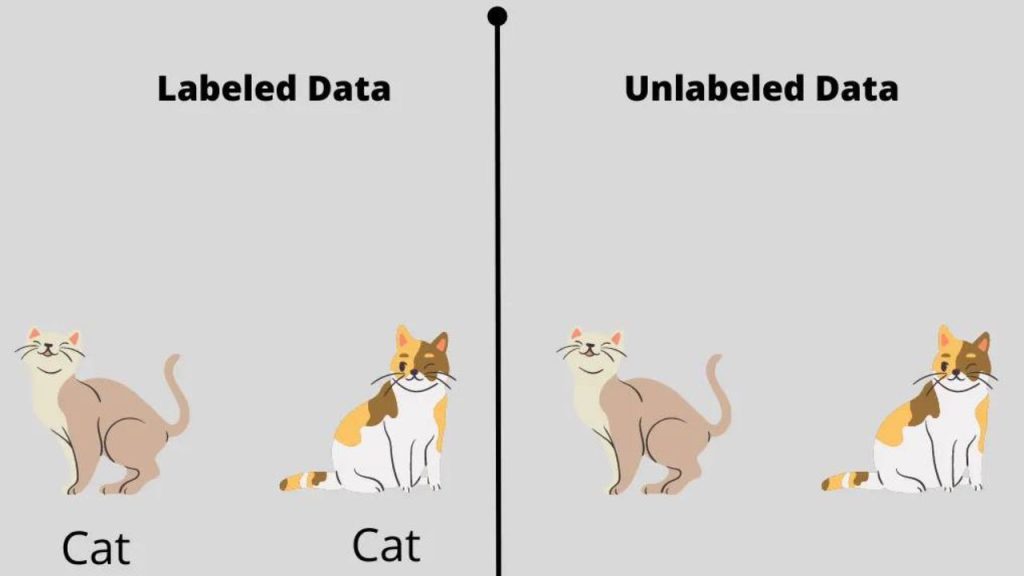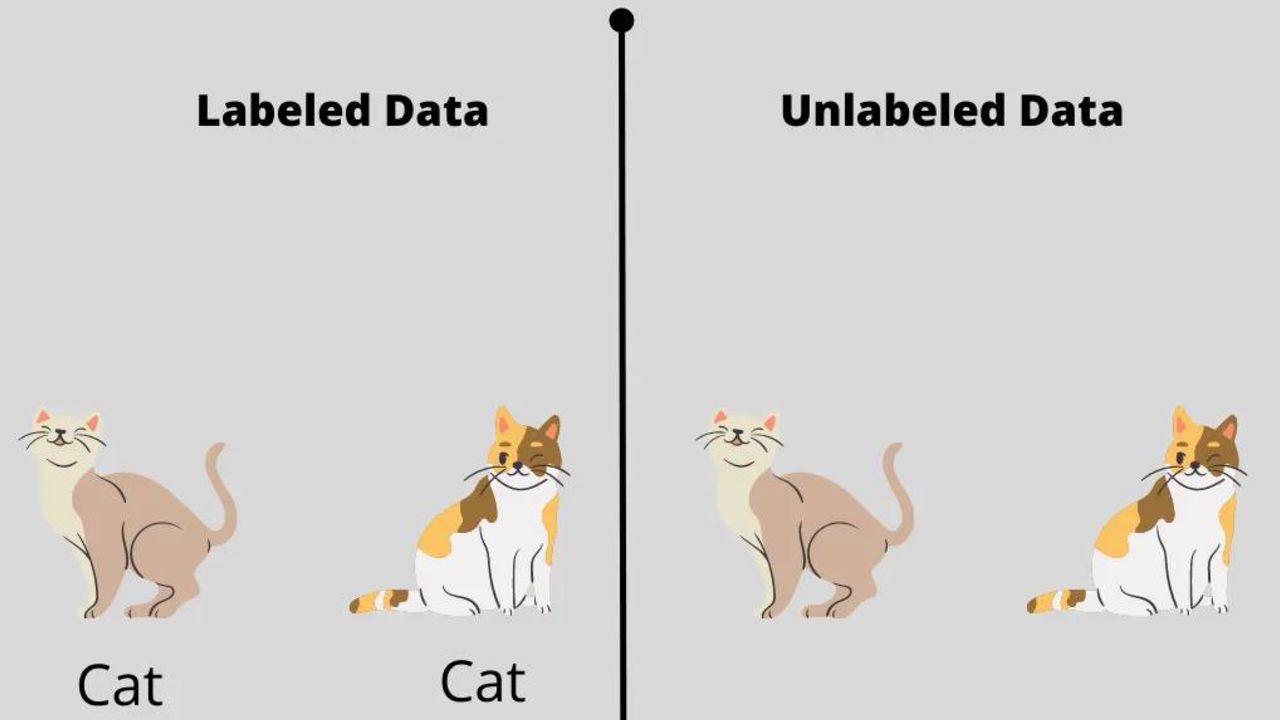
Big data is the foundation of machine learning. Machine learning algorithms learn from the data they are fed, which makes it essential to understand the type of data and its quality. The two primary types of data used in machine learning are labelled and unlabelled data.
In this blog post, we will explore the differences between labelled and unlabelled data in machine learning, their advantages and limitations, and when to use them.
What is Labelled Data?
Labelled data refers to data that has already been classified or tagged with the correct output. It is the most common type of data used in supervised learning, where the machine learning algorithm is trained using a set of inputs and the corresponding outputs.
For instance, a dataset containing images of animals with corresponding labels (cat, dog, bird, etc.) is labelled data.
Advantages of using labelled data in machine learning
Labelled data plays a crucial role in machine learning since it provides a clear understanding of the output for a given input. Here are some of its advantages in machine learning are as follows:
- Accurate predictions: Labelled data enables the machine learning algorithm to produce more accurate predictions since the correct output is known. The algorithm can compare its predictions to the known output, making it easier to identify errors and improve its accuracy.
- Faster convergence: Since the machine learning algorithm has access to the correct output, it can converge to the correct solution faster than when using unlabelled data. This is because the algorithm can adjust its parameters to minimize the difference between its predictions and the known output.
- Clear evaluation metrics: With labelled data, it is easy to evaluate the performance of the machine learning algorithm using standard evaluation metrics. For instance, accuracy, precision, recall, and F1-score can be used to evaluate classification algorithms, while mean squared error, mean absolute error, and R-squared can be used to evaluate regression algorithms.
- Specific to a task: It is specific to a particular task, making it easier to develop a machine learning algorithm that is tailored to a specific use case. For instance, labelled data for detecting spam emails can be used to train a machine learning algorithm to detect spam emails accurately.
- Easier to preprocess: Labelled data is easier to preprocess since the output is known. This makes it easier to clean the data and handle missing values.
- Reusability: Labelled data can be reused in multiple machine learning algorithms, especially when the output remains the same. This can save time and resources since there is no need to label the data again.
Limitations and challenges of labelled data
- Cost: It is costly to obtain, especially for large datasets. The process of manually labelling data can be time-consuming, making it expensive.
- Limited scope: It is limited to the specific task for which it was labelled. If the data was labelled for image classification, it cannot be used for speech recognition without re-labelling.
- Bias: It can be biased, leading to incorrect predictions. For instance, if a dataset is labelled by a single individual or a group with specific biases, the algorithm will be biased towards their perspective.
What is Unlabelled Data?
Unlabelled data refers to data that has not been pre-classified or labelled. It is the most common type of data used in unsupervised learning, where the machine learning algorithm is trained to identify patterns and structures in the data without being given specific outputs.
For example, a dataset containing a list of customer transactions without labels is considered unlabelled data. Now, let’s discuss some of the advantages and limitations of unlabelled data.
Related: Reinforcement Learning: Applications and Real-World Examples
Advantages of using unlabelled data in machine learning
Unlabelled data refers to data that does not have any known output, making it challenging to use for traditional supervised learning tasks. However, it can still be valuable in machine learning, and there are several advantages to using unlabelled data, including:
- Flexibility: Unlabelled data is more flexible than labelled data since it can be used for multiple tasks. For instance, It can be used for anomaly detection, clustering, and dimensionality reduction.
- Data volume: It is abundant and readily available compared to labelled data. This is especially true for datasets such as social media data, where labelling the data can be time-consuming and expensive.
- Novelty detection: It can be used for novelty detection, where the machine learning algorithm is trained to detect unusual or unexpected patterns in the data. This can be valuable in anomaly detection and fraud detection.
- Uncovering hidden patterns: It can help uncover hidden patterns in the data that are not visible using labelled data. This is because labelled data only captures known patterns, while unlabelled data capture unknown patterns in the data.
- Transfer learning: It can be used for transfer learning, where a machine learning model is trained on one task and then applied to another related task. This can save time and resources since there is no need to label the data again.
- Preprocessing: It can be used to preprocess the data for supervised learning tasks. For instance, unsupervised learning techniques such as clustering can be used to group similar data points, making it easier to label the data.
Limitations and challenges of unlabelled data
- Ambiguity: Unlabelled data is ambiguous, making it difficult for machine learning algorithms to interpret. Without the correct output, it is challenging to determine whether the algorithm’s predictions are correct or not.
- Slower convergence: Unlabelled data takes longer to converge to the correct solution since the algorithm has to learn the patterns without the correct outputs.
- Lack of evaluation metrics: It is challenging to evaluate the performance of a machine learning algorithm trained on unlabelled data. This makes it difficult to determine the accuracy of the algorithm’s predictions.
Labelled vs Unlabelled Data
- Output availability: The most significant difference between labelled and unlabelled data is the availability of output. Labelled data has a known output or label, while unlabelled data does not have any known output or label.
- Supervision: Labelled data is used in supervised learning tasks, while unlabelled data is used in unsupervised learning tasks. In supervised learning, the machine learning algorithm learns from labelled data, where the input and output are known. In unsupervised learning, the algorithm learns from unlabelled data, where only the input is available.
- Purpose: Labelled data is primarily used for classification and regression tasks, where the goal is to predict a label or value for a given input. Unlabelled data is used for tasks such as clustering, anomaly detection, and dimensionality reduction, where the goal is to uncover hidden patterns or structures in the data.
- Availability: Labelled data is often scarce and expensive to obtain since it requires human annotation or expert knowledge. In contrast, unlabelled data is abundant and readily available, making it easier to collect and use in machine learning tasks.
- Accuracy: Labelled data is generally more accurate than unlabelled data since the output is known. This is because unlabelled data can be noisy and contain errors, making it challenging to use for precise machine learning tasks.
- Reusability: Labelled data can be reused in multiple machine learning algorithms, especially when the output remains the same. In contrast, unlabelled data is generally specific to a particular task and cannot be reused in other machine learning tasks.
There are some scenarios where using both labelled and unlabelled data is beneficial. Semi-supervised learning techniques combine both labelled and unlabelled data to achieve better performance.
What is Semi-supervised learning?
Semi-supervised learning is a type of machine learning that combines both labelled and unlabelled data to train a model. In semi-supervised learning, a small portion of the data is labelled, and the rest is unlabelled.
The idea behind semi-supervised learning is that unlabelled data contains valuable information that can be used to improve the performance of a machine learning model.
Semi-supervised learning is particularly useful in situations where labelling the data is expensive, time-consuming, or difficult. For example, in image recognition tasks, labelling images can be costly and time-consuming, making it challenging to collect large amounts of labelled data.
In such cases, semi-supervised learning can be used to train a machine learning model using a smaller amount of labelled data and a larger amount of unlabelled data.
Before you go…
Hey, thank you for reading this blog to the end. I hope it was helpful. Let me tell you a little bit about Nicholas Idoko Technologies. We help businesses and companies build an online presence by developing web, mobile, desktop, and blockchain applications.
We also help aspiring software developers and programmers learn the skills they need to have a successful career. Take your first step to becoming a programming boss by joining our Learn To Code academy today!
Be sure to contact us if you need more information or have any questions! We are readily available.
[E-Books for Sale]
1,500 AI Applications for Next-Level Growth: Unleash the Potential for Wealth and Innovation
$5.38 • 1,500 AI Applications • 228 pages
Are you ready to tap into the power of Artificial Intelligence without the tech jargon and endless guesswork? This definitive e-book unlocks 1,500 real-world AI strategies that can help you.
See All 1,500 AI Applications of this E-Book
750 Lucrative Business Ideas: Your Ultimate Guide to Thriving in the U.S. Market
$49 • 750 Business Ideas • 109 pages
Unlock 750 profitable business ideas to transform your future. Discover the ultimate guide for aspiring entrepreneurs today!
See All 750 Business Ideas of this E-Book
500 Cutting-Edge Tech Startup Ideas for 2024 & 2025: Innovate, Create, Dominate
$19.99 • 500 Tech Startup Ideas • 62 pages
You will get inspired with 500 innovative tech startup ideas for 2024 and 2025, complete with concise descriptions to help you kickstart your entrepreneurial journey in AI, Blockchain, IoT, Fintech, and AR/VR.
We Design & Develop Websites, Android & iOS Apps
Looking to transform your digital presence? We specialize in creating stunning websites and powerful mobile apps for Android and iOS. Let us bring your vision to life with innovative, tailored solutions!
Get Started Today




